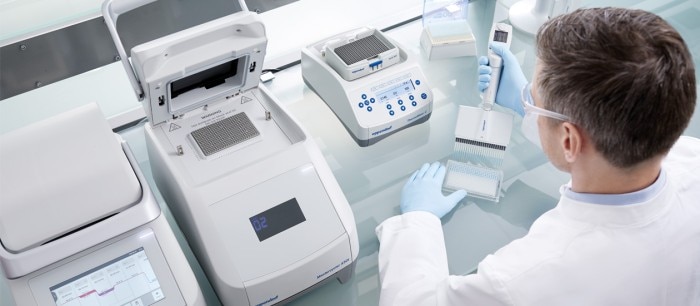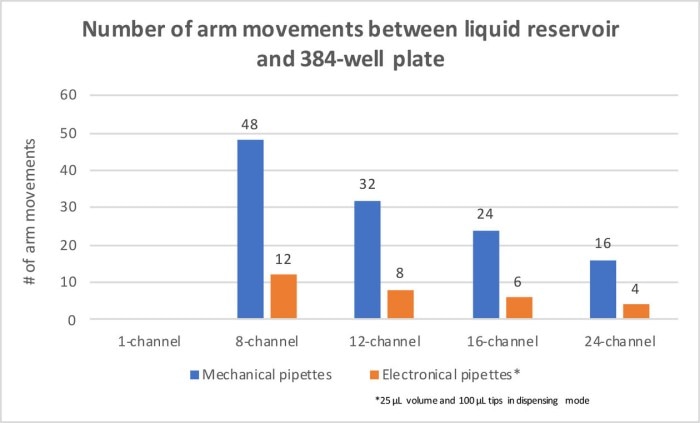-
-
-
- Challenges and Chances: A Review of the 1st Stem Cell Community Day
- Summertime, and the Livin’ Is Easy…
- Follow-on-Biologics – More than Simple Generics
- Bacteria Versus Body Cells: A 1:1 Tie
- Behind the Crime Scene: How Biological Traces Can Help to Convict Offenders
- Every 3 Seconds Someone in the World Is Affected by Alzheimer's
- HIV – It’s Still Not Under Control…
- How Many Will Be Convicted This Time?
- Malaria – the Battle is Not Lost
- Physicians on Standby: The Annual Flu Season Can Be Serious
- At the Forefront in Fighting Cancer
- Molecular Motors: Think Small and yet Smaller Again…
- Liquid Biopsy: Novel Methods May Ease Cancer Detection and Therapy
- They Are Invisible, Sneaky and Disgusting – But Today It’s Their Special Day!
- How Many Cells Are in Your Body? Probably More Than You Think!
- What You Need to Know about Antibiotic Resistance – Findings, Facts and Good Intentions
- Why Do Old Men Have Big Ears?
- The Condemned Live Longer: A Potential Paradigm Shift in Genetics
- From Research to Commerce
- Chronobiology – How the Cold Seasons Influence Our Biorhythms
- Taskforce Microbots: Targeted Treatment from Inside the Body
- Eyes on Cancer Therapy
-
-
-
-
-
- Challenges and Chances: A Review of the 1st Stem Cell Community Day
- Summertime, and the Livin’ Is Easy…
- Follow-on-Biologics – More than Simple Generics
- Bacteria Versus Body Cells: A 1:1 Tie
- Behind the Crime Scene: How Biological Traces Can Help to Convict Offenders
- Every 3 Seconds Someone in the World Is Affected by Alzheimer's
- HIV – It’s Still Not Under Control…
- How Many Will Be Convicted This Time?
- Malaria – the Battle is Not Lost
- Physicians on Standby: The Annual Flu Season Can Be Serious
- At the Forefront in Fighting Cancer
- Molecular Motors: Think Small and yet Smaller Again…
- Liquid Biopsy: Novel Methods May Ease Cancer Detection and Therapy
- They Are Invisible, Sneaky and Disgusting – But Today It’s Their Special Day!
- How Many Cells Are in Your Body? Probably More Than You Think!
- What You Need to Know about Antibiotic Resistance – Findings, Facts and Good Intentions
- Why Do Old Men Have Big Ears?
- The Condemned Live Longer: A Potential Paradigm Shift in Genetics
- From Research to Commerce
- Chronobiology – How the Cold Seasons Influence Our Biorhythms
- Taskforce Microbots: Targeted Treatment from Inside the Body
- Eyes on Cancer Therapy
-
-

How to Reduce the Risk of RSI in 384-well Applications
Lab Academy
- 医療
- 細胞生物学
- 効率
- 品質
- 再現性
- 人間工学
- 正確性
- チップ
- エッセー
With the advent of the high-throughput screening approach, the need for a microplate with a larger number of wells appeared and was quickly implemented as a consumable for plate assays. Applications performed in 384-well plates require repetitive liquid handling steps. Automated pipetting platforms represent an investment that smaller labs or companies often cannot afford. Then multi-channel pipettes are preferred. Thus, 16 or 24-channel pipettes designed to fit the 384-well microplate format are an alternative solution for scientists looking to increase their throughput. Compared to 8 or 12-channel pipettes, especially the electronic versions of 16 or 24-channel pipettes save pipetting time and reduce the risk of repetitive strain injuries (RSIs).
Reducing the number of arm movements help minimize the risk of RSI
もっと読む
表示を減らす

- Using multichannel pipettes instead of single-channel pipettes - if available 16 or 24-channel pipettes
a. For instance, arm movement can be reduced from 48 movements with an 8-channel pipette to 16 movements with a 24-channel pipette (=> reduces arm movement by 67%) - The use of multichannel electronic pipettes in dispensing mode further reduces arm movement significantly, as shown in Figure 1.
- The use of electronic 24-channel pipettes in dispensing mode represents the ultimate solution as only between 1 and 16 arm movements are needed, depending on the volume used.
a. For instance, when dispensing a volume of 25 µL with a 100 µL tip, 4 arm movements are needed per plate, saving additional 75% compared to 16 movements with mechanical 24-channel pipettes
b. Thus, compared to mechanical 8-channel pipettes you can save 92% of arm movements with electronic 24-channel pipette in dispensing mode
In summary, a higher number of channels has a direct impact on the number of movements required to dispense liquids into plates. With a 16 or 24-channel pipette, the number of movements is decreased, especially with electronic models used in dispensing mode, reducing significantly the risk of repetitive strain injury appearance.
もっと読む
表示を減らす
Related links
もっと読む
表示を減らす
